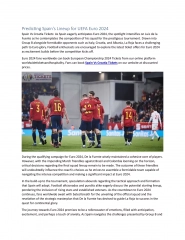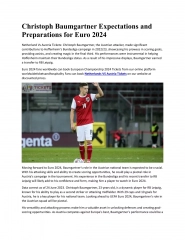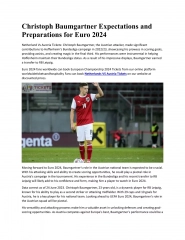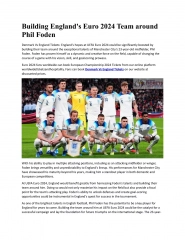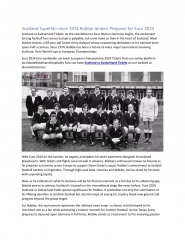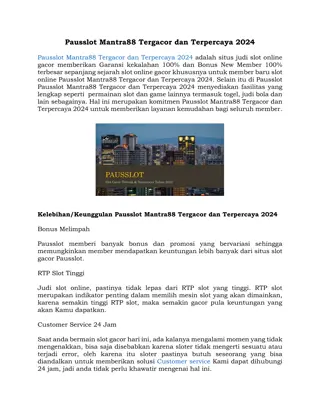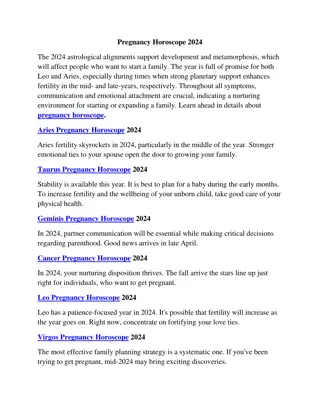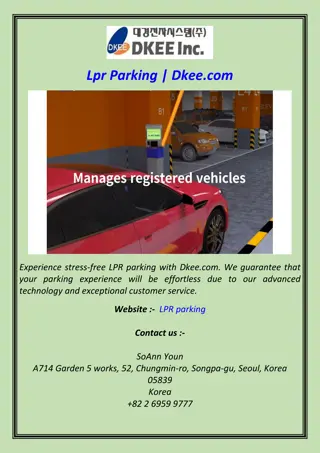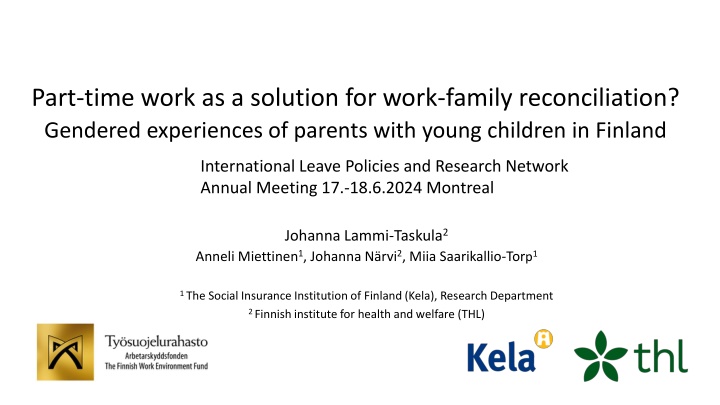
Gendered Experiences of Parents with Young Children in Finland
"Explore the tensions and solutions for work-family reconciliation through part-time work in Finland, focusing on the gendered experiences of parents with young children. Discover disparities in work-family reconciliation experiences, partial family leaves, and the impact of part-time work on balancing work and family life."
Download Presentation

Please find below an Image/Link to download the presentation.
The content on the website is provided AS IS for your information and personal use only. It may not be sold, licensed, or shared on other websites without obtaining consent from the author. If you encounter any issues during the download, it is possible that the publisher has removed the file from their server.
You are allowed to download the files provided on this website for personal or commercial use, subject to the condition that they are used lawfully. All files are the property of their respective owners.
The content on the website is provided AS IS for your information and personal use only. It may not be sold, licensed, or shared on other websites without obtaining consent from the author.
E N D
Presentation Transcript
Part-time work as a solution for work-family reconciliation? Gendered experiences of parents with young children in Finland International Leave Policies and Research Network Annual Meeting 17.-18.6.2024 Montreal Johanna Lammi-Taskula2 Anneli Miettinen1, Johanna N rvi2, Miia Saarikallio-Torp1 1 The Social Insurance Institution of Finland (Kela), Research Department 2 Finnish institute for health and welfare (THL)
Introduction Tensions between childcare responsibilities and paid employment are one of the key challenges for the wellbeing of parents with young children. Part-time work is often seen as a solution to reconcile work and family life when children are young (Beham et al. 2019; van Breechoten & Evertsson 2019). While part-time work may have a positive impact on work-life balance and overall life satisfaction, it also carries penalties including lower status and income and weaker career opportunities (Lyonette 2015; Kauhanen, 2016; Salmi et al. 2017). In Finland, policies aiming at promoting work-family reconciliation include also leave options that support (temporary) part-time work for parents of young children (Keyril inen 2020; Lammi-Taskula et al. 2023). Relatively little is known about take-up, motivations and consequences of part-time family leave options.
Work-family reconciliation in Finland: disparities in experiences A majority of employed parents report mainly positive experiences of work-family reconciliation; disparities are related to both family situations and work characteristics. Easier for younger parents and those with one child; more difficult when children are young, especially for mothers. Easier when working hours are suitable and workplace culture is supportive. More difficult for those with long or irregular hours (men); high workload (women); time pressure (managers, white-collar, highly educated, self- employed). Salmi & Lammi-Taskula 2014; Nieminen 2019; Sutela et al. 2019; Sorsa & Rotkirch 2020; Lammi- Taskula & N rvi 2022; Lammi-Taskula & Kinnunen 2024; Toivanen 2024.
Partial family leaves in Finland In 1988, parents got a right to partial childcare leave after parental leave with a low, flat-rate partial care allowance. In 2014, a slightly higher flat-rate flexible childcare benefit was introduced to support part-time employment until child is 3 yrs; partial care allowance is available for parents with a child attending 1st/2ndclass at school. Part-time parental leave was possible 2003-2022 (both parents simultaneously when the child is 4-10 months); in the 2022 reform the part-time use of parental leave was made more flexible (half days taken by one parent until child is 2 yrs). Less than ten per cent of children in the respective age group are taken care of with the Flexible Care Allowance or Partial Care Allowance, mainly by mothers; the use of the partial parental leave has been practically non-existent (Lammi- Taskula et al. 2023).
Part-time work in Finland Part-time work has not been very common in Finland, but during the past decades it has become somewhat more typical (Py ri et al. 2019). Most common reason for part-time work among women is lack of full time work (33 %) and among men studying (37 %). For 11 % of women and 1 % of men the reason was (child)care responsibilities. (Sutela et al. 2019.) In 2019, about 1/4 mothers and 1/20 fathers of children aged 1-2 worked part-time (Keyril inen 2020). Part-time work is more common among parents with 2+ children, as well as among self-employed (Sorsa & Rotkirch 2020). Highly educated parents are better able to (temporarily) shorten their hours due to higher income and better workplace support (Larsson 2012; Salmi et al. 2017; Lammi-Taskula & Kinnunen 2024). Working hours have been shortened bc of childcare more often by parents employed in female- dominated workplaces, especially social and health care; less often by those employed in the private sector and/or large organisations (Lammi-Taskula & Kinnunen 2024).
Obstacles for part-time work among parents Both practical/material and ideological/cultural obstacles have been identified in previous research. According to the Labour force study 2018, the most common obstacle for working part-time is family economy (Nieminen 2019). Highly educated parents report work pressure as an obstacle (Lammi-Taskula & Kinnunen 2024). Obstacles experienced by fathers are the traditional gender ideology (mother as primary carer, father as breadwinner); as well as full-time norm especially at male-dominated workplaces (Haas & Hwang 2016; Larsson & Bj rk 2017; Lott & Klenner 2018; Brandth & Kvande 2019).
Research questions 1. Is shortening working hours (use of partial family leave) related to more positive experiences of work-family reconciliation? 2. Are there differences according to gender and socioeconomic background? 3. What is the role of work characteristics and workplace support for these experiences?
Data The data are based on a population-level web survey among Finnish parents of 1 2-year-old children, collected in collaboration with the Social Insurance Institution of Finland (Kela) and the Finnish Institute for Health and Welfare (THL) in May 2022. Random sample of 5050 mothers and 7500 fathers (who had used at least one day of birth-related paternity leave). The response rate was 36 % for mothers and 22 % for fathers. In this study, we use the data on employed parents who live with a spouse (n=855 mothers, 1255 fathers). The data is weighted by respondent s age, no. of children, age of the (focal) child, region.
Dependent Dependent variable variable: : Work Work- -family family reconciliation reconciliation experiences experiences WFR according to gender, socio-demographic background and work characteristics#, % *** It is easy for me to combine work/studies and family life Likert 1-5 recoded -> 1= fully or partly agree 0= others shift work/other ** daytime work * public/third sector private sector (*) 2+ children one child * 30+ age under 30 0 20 40 60 80 fathers mothers # other background aspects are not statistically significant (*)p<.10 *p<.05 **p<.01 ***p<.001
Independent Independent variable variable: : Shortens Shortens working working hours hours SWH because of childcare, according to gender, socio- demographic background and work characteristics#, % (*) shiftwork/other ** daytime work Have you shortened your working hours or worked part-time because of childcare arrangements? 1= yes currently 0= no, not going to /no, but going to /yes before male-dominated * female-dominated/balanced ** *** public sector * private sector blue/lower white collar * upper white collar or manager low/middle education * high education 30+ (*) under 30 0 5 10 15 20 25 30 35 40 fathers mothers # other background aspects are not statistically significant (*)p<.10 *p<.05 **p<.01 ***p<.001
Experiences of work-family reconciliation as easy (agree fully or partly), according to gender and shortening of working hours %) Shortens working hours due to childcare Mothers (n=855) Fathers (n=1255) Yes 53 65 No 61 66 X2 .032 .773
Logistic regression (separately for mothers and fathers) / SPSS 29.0 Model 1 work-family reconciliation experiences x shortening of hours Model 2 + sociodemographic background age, birth order, age of youngest child, education, occupational status, livelihood experience, child in paid childcare Model 3 + work characteristics workplace sector, size of organisation, gender ratio of workplace, number of days worked per week Model 4 + workplace support negative consequences of leave at work
Experiences of work-family reconciliation as easy Logistic regression: mothers Model 1 Model 2 OR p OR Shortens working hours .900 .032 Sosiodemographic background Age Education Number of children Manager/upper white collar position Model 3 OR .925 Model 4 OR .954 Model 5 OR .944 p .135 p .131 p .431 p .339 .926 .642 .743 1.073 1.135 .768 .839 .958 1.096 .059 .099 .665 .640 .785 .826 .957 1.074 . 084 . 073 . 656 . 718 .007 .031 .541 .585 .626 .745 1.059 1.105 .005 .036 .627 .669 Income 1.180 1.169 .028 1.167 . 031 .063 1.176 .071 Childcare solution Home care by spouse/unpaid carer 1.169 1.397 .171 .560 1.098 .753 Work characteristics Private sector Number of staff Female-dominated or balanced .854 .922 1.546 .389 .325 .098 .820 .910 1.479 .286 .261 .143 1.342 1.665 Has worked from home Day work Workplace support Negative consequences of family leave .145 .012 1.292 1.748 .211 .006 .329 <.001
Experiences of work-family reconciliation as easy Logistic regression: fathers Model 1 OR p Model 2 OR Model 3 OR Model 4 OR Model 5 OR p p p p Shortens working hours Sosiodemographic background Age Educations Number of children Manager/upper white collar position Income Childcare solution Home care by spouse/unpaid carer Work characteristics Private sector Number of staff Female-dominated or balanced Has worked from home Day work Workplace support Negative consequences of family leave .976 .756 1.017 .842 1.015 .861 1.081 .416 1.079 .428 .745 .870 .790 1.160 1.071 .007 .124 .005 .328 .243 .744 .869 .796 1.142 1.074 .007 .121 .007 .384 .230 .742 .744 .826 .933 1.064 .011 .008 .034 .680 .339 .748 .743 .823 .954 1.059 .014 .008 .031 .778 .385 .944 .361 .936 .323 .932 .298 1.143 1.026 1.083 1.335 1.754 .432 .346 .575 .097 .002 1.148 1.024 1.079 1.314 1.753 .418 .399 .594 .117 .002 .589 .103
Discussion 1/2 Mothers of young children (temporarily) shorten their working hours because of childcare more often than fathers. Shortening working hours is more common among parents who work in the public sector, female-dominated workplaces, other than daytime work. Employed parents of young children who (temporarily) shorten their working hours because of childcare do not experience work-family reconciliation as easy any more than those who don t shorten their hours. Mothers who shorten their hours experience work-family reconciliation as easy less often than other mothers. Paid employment is mainly organised on a full-time basis in Finland. Parents may face the flexibility stigma i.e. they are seen as less producive and less committed to work when using flexible possibilities because of family reasons (Williams et al. 2013; Chung 2018).
Discussion 2/2 Rather than shorter hours, work-family reconciliation is related to income level: it is easier when parents do not need to worry about family economy. Loss of income is the main obstacle for shortening hours; it is also seen as problematic if the work load is not reduced accordingly (Nieminen 2019). The allowance paid during partial leave is very small. Economic insecurity and work obstacles reproduce part-time work as women s practice (Bueno & Grau-Grau 2021); a male breadwinner is needed. Daytime work (in comparison to shift work or irregular hours) is associated with easier work-family reconciliation. Timetables more compatible with ECEC opening hours; less complicated childcare arrangements (Repo et al. 2022; Sulkanen et al. 2022). Lack of workplaces support when taking family leave (negative consequences) decreases the likelihood of easy work-family reconciliation after return to work among mothers (but not fathers due to low frequences). Part-time work does not necessarily ease work-family reconciliation if the workplace culture is not supportive (Larsson 2012; van Breeschoten & Evertsson 2019).
Conclusions Part-time leave options are possible mainly for higher-income mothers, and/or if their spouse is full-time, high-income earner; in a context of a family-friendly workplace with no flexibility stigma.


